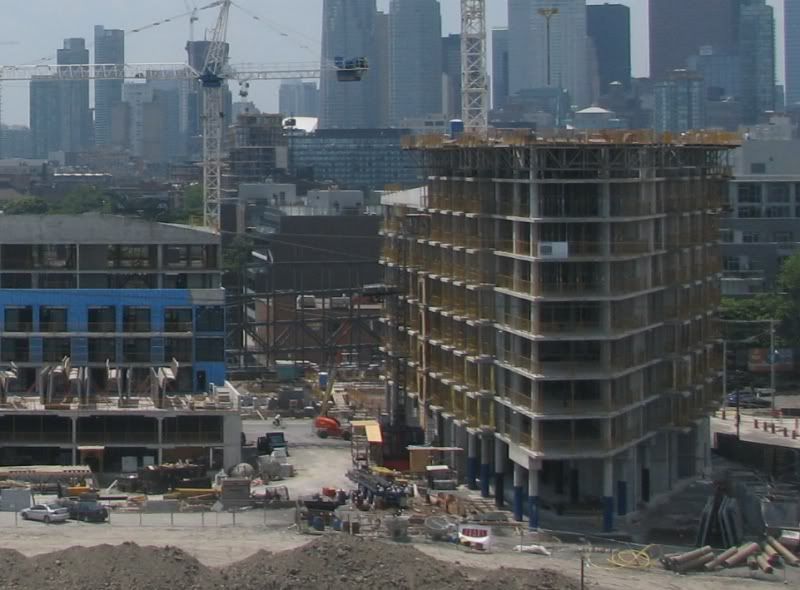AlvinofDiaspar
Moderator
The bridge between the buildings - cropped from the WT webcam:

AoD

AoD

does anybody have any idea when they are going to start on phase 2?

It's not about how much shopping you can do, it's about having basic services and an attractive main street for the new neighbourhood. Front Street in the West Don Lands has the potential to be one of Toronto's best downtown streets, no different from Parliament or Queen. A new downtown neighbourhood that's nothing but residential is little better than a suburban subdivision. While I don't see any reason for retail to be required on River Street, it absolutely should be on Front or Queen.How much shopping can one city do, though? If all the dreary, arterial roads in our boring suburbs were lined with as many lively retail and cultural attractions as our best downtown streets are would there be enough demand to support it?